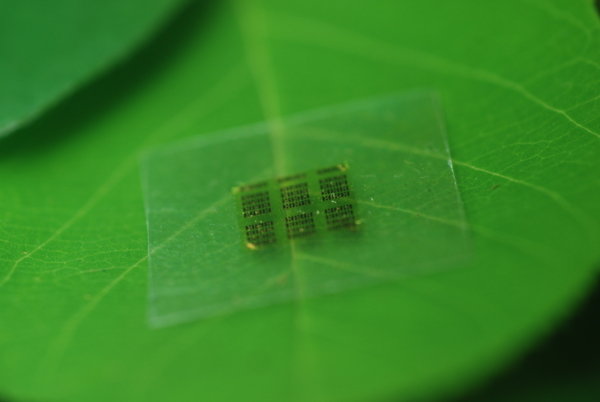
Today’s cast-off gadgets are far more likely to end up in a landfill than they are being responsibly disposed of. In fact, 41.8 million tons of e-waste were scrapped last year alone. To combat this, a team from the University of Wisconsin-Madison has invented a radically new kind of ecologically-friendly semiconductor chip made from wood. No, seriously.
The University of Wisconsin team, led by professor Zhenqiang “Jack” Ma and working in collaboration with the U.S. Department of Agriculture Forest Products Laboratory (FPL), published their findings on Tuesday in the journal Nature Communications. Their research centers around using a uniquely flexible (and biodegradable, natch) material known as cellulose nanofibril (CNF) as a semiconductor substrate. “If you take a big tree and cut it down to the individual fiber, the most common product is paper. The dimension of the fiber is in the micron stage,” Zhiyong Cai, a project leader at the FPL explained in a statement. “But what if we could break it down further to the nano-scale? At that scale you can make this material, very strong and transparent CNF paper.” Plus, it’s flexible which means that chips built on a CNF substrate can easily be incorporated into bendable electronics.
It’s most important physical attribute however, is the fact that when the chip iscompostable. “The majority of material in a chip is support. We only use less than a couple of micrometers for everything else,” Ma said in a statement. “Now the chips are so safe you can put them in the forest and fungus will degrade it. They become as safe as fertilizer.” The team has already spent over a decade developing the substrate. Up next, researchers need to prove that CNF can perform on par with current chip materials like the highly-toxic gallium arsenide before marketing the technology to chipmakers.
[“source-engadget.com”]







